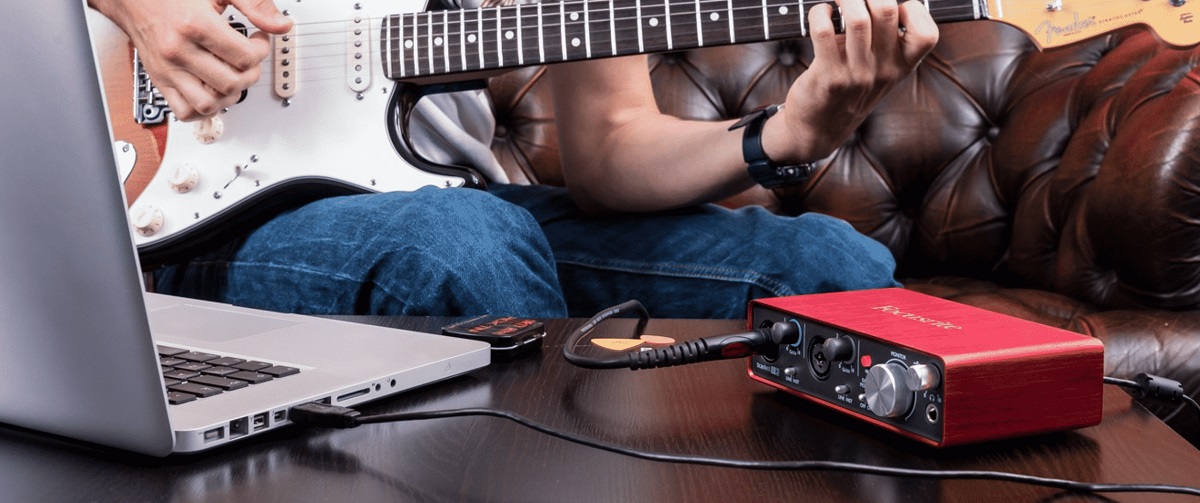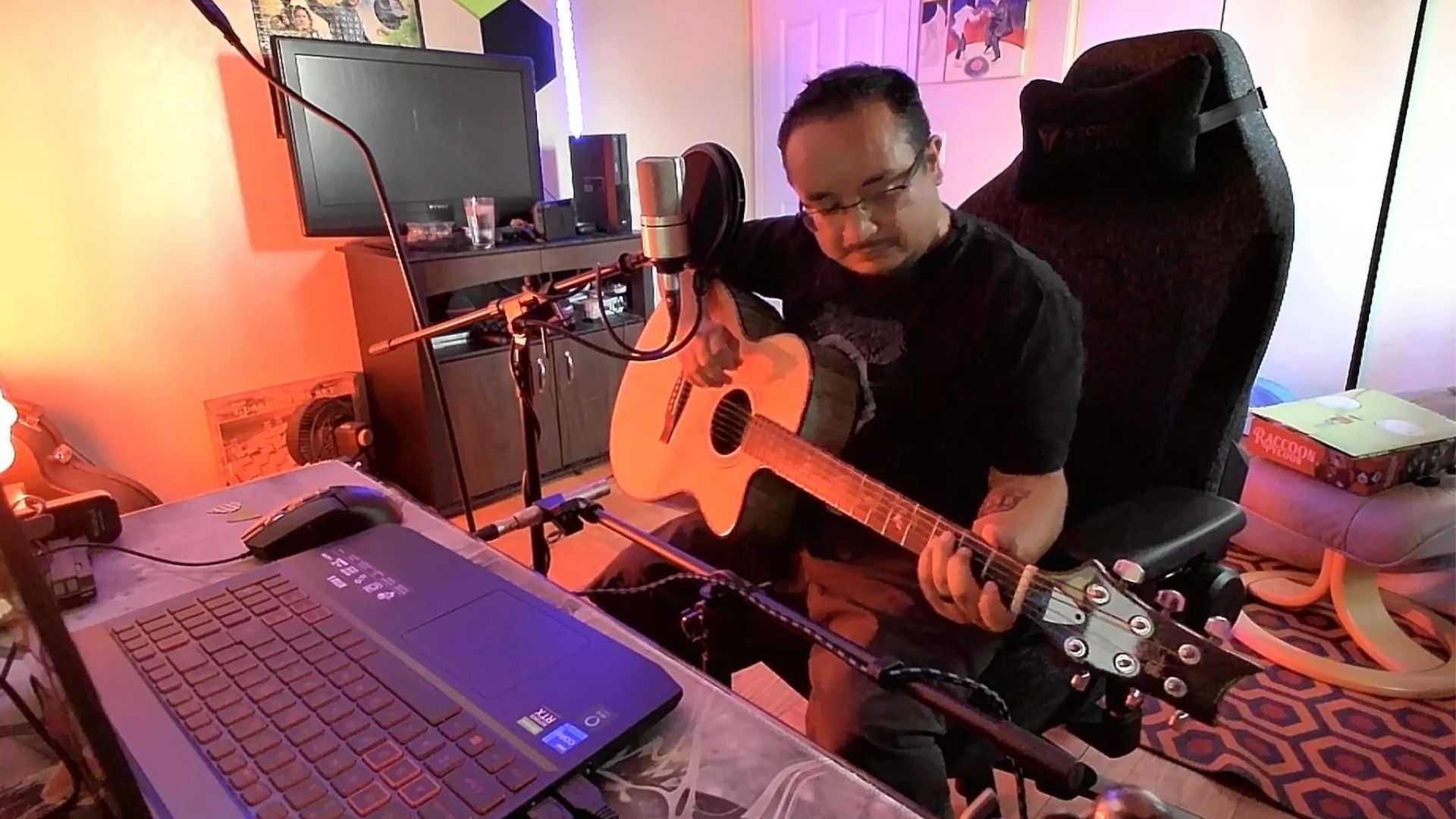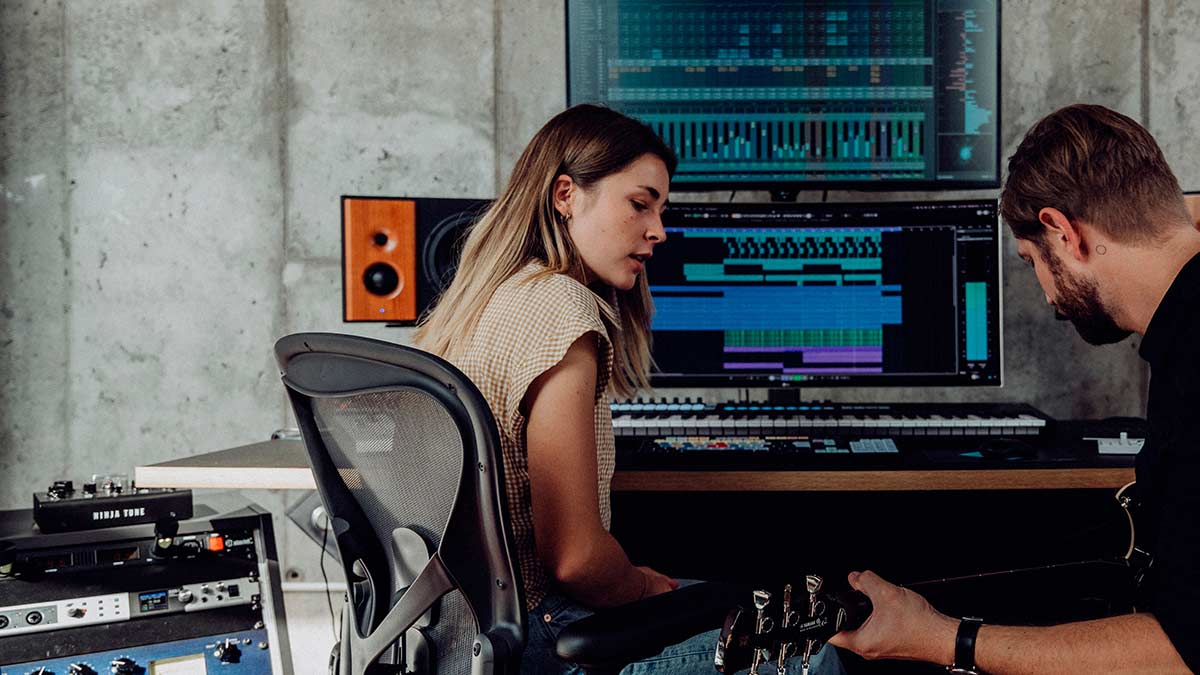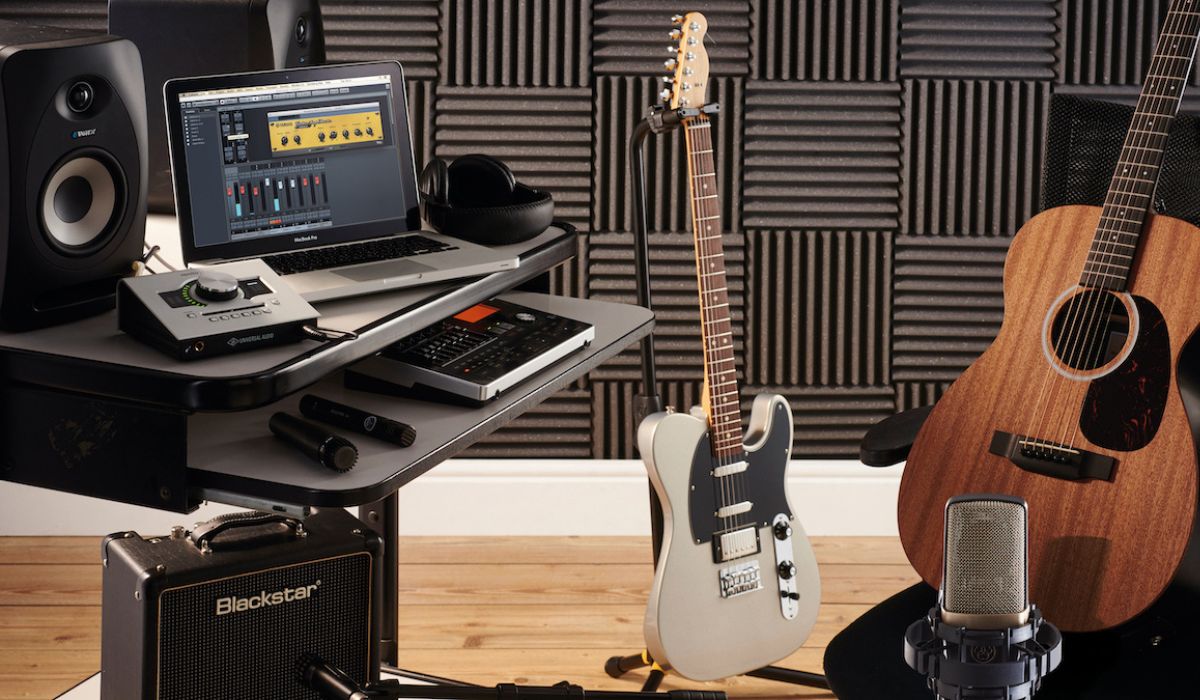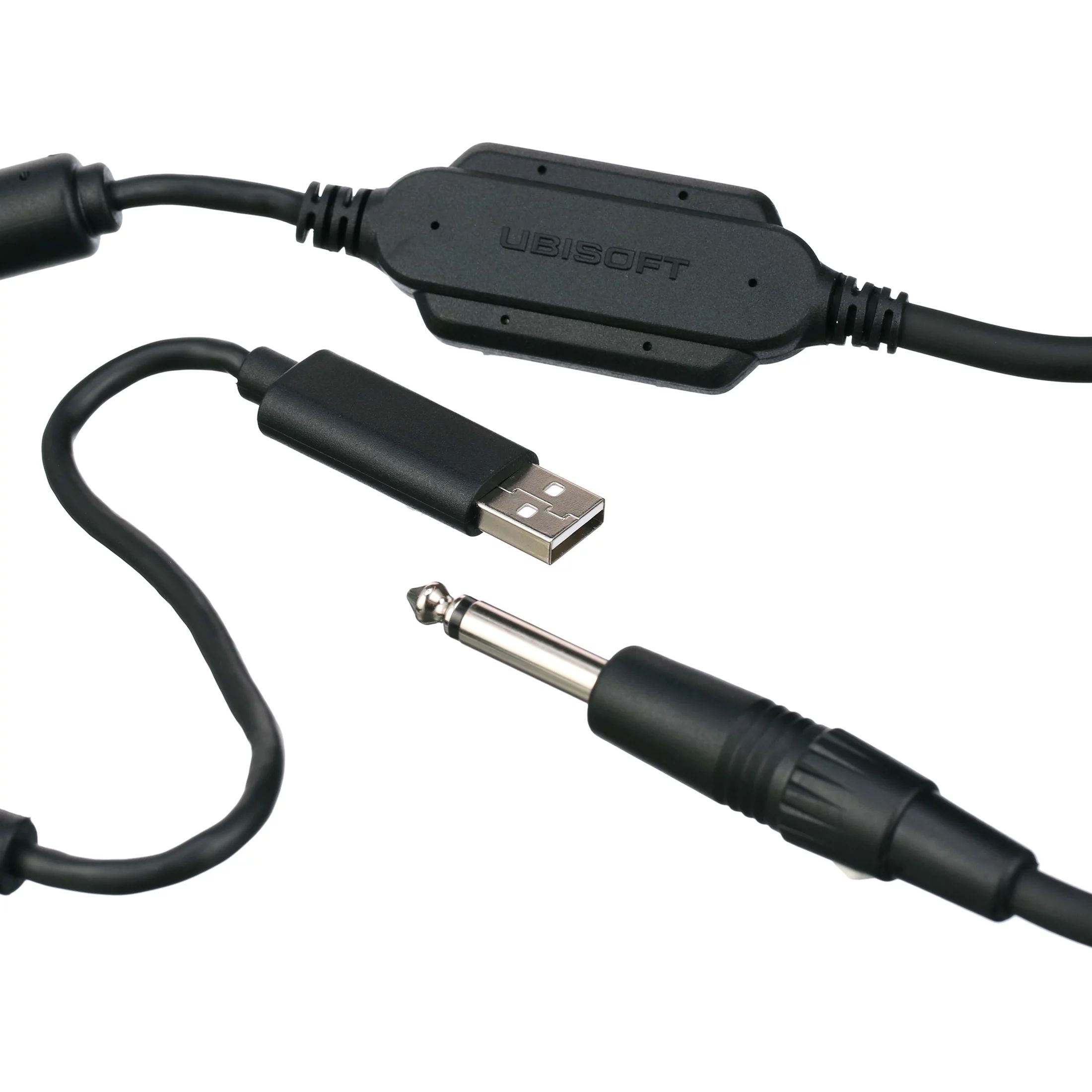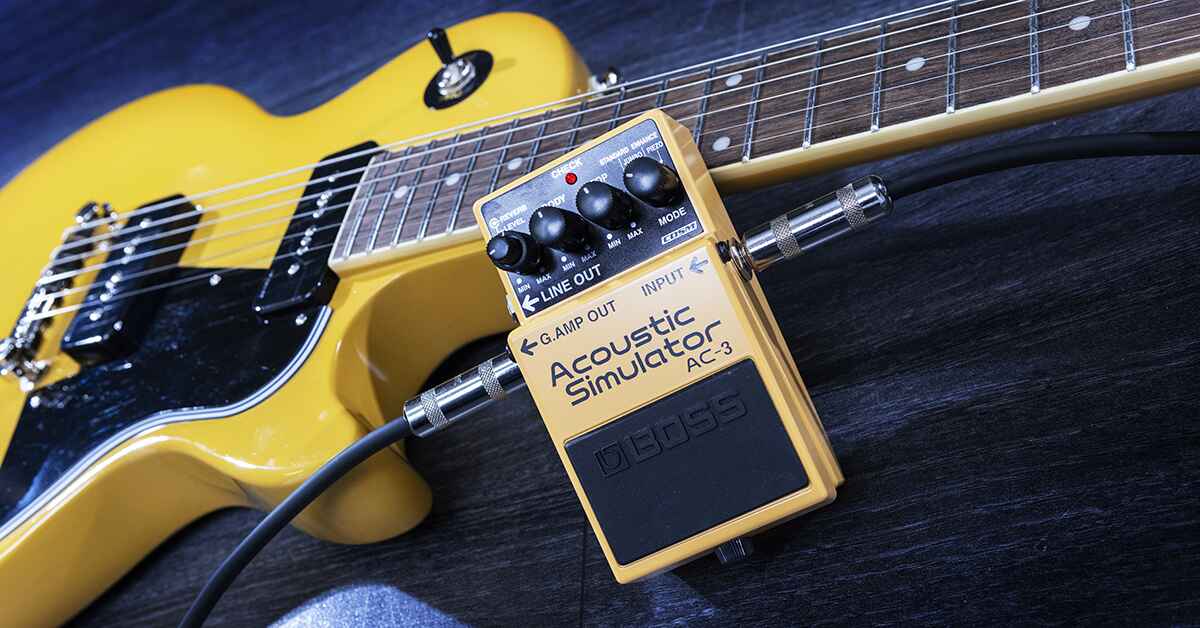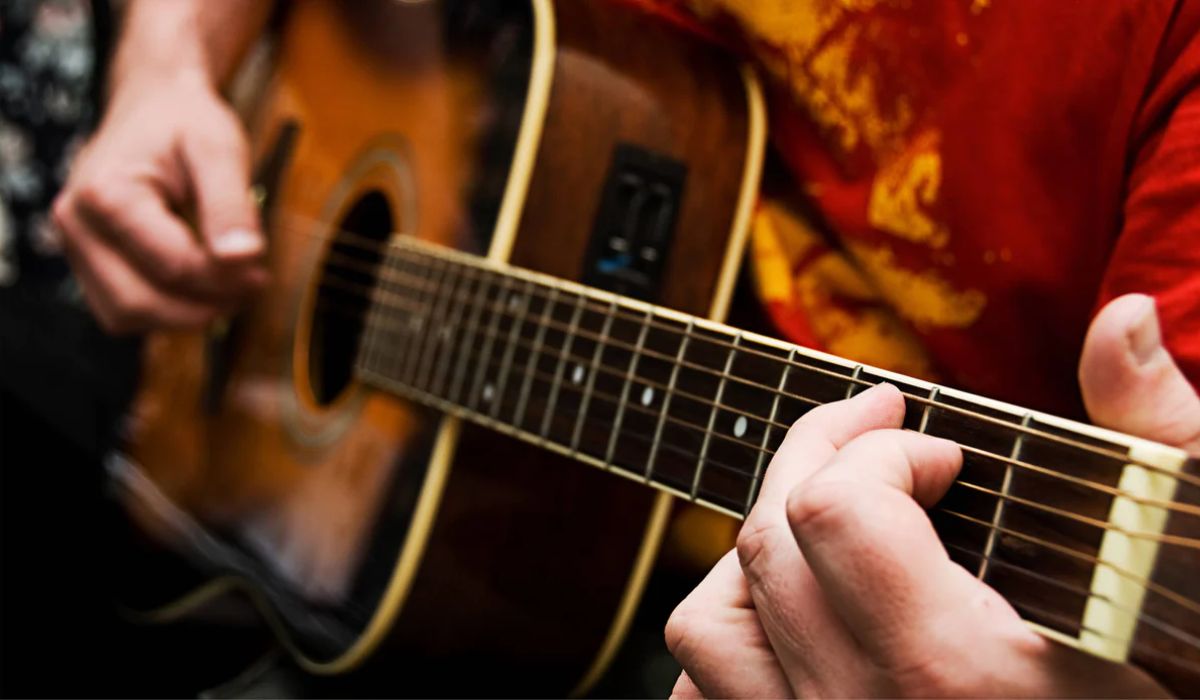Introduction
Connecting an electric guitar to a Mac can open up a world of musical possibilities, allowing you to record, edit, and enhance your guitar performances using various software applications. Whether you're a seasoned musician or a beginner eager to explore the digital realm of music production, this guide will walk you through the steps to seamlessly link your electric guitar to your Mac. By following these simple instructions, you can harness the power of technology to unleash your creativity and share your musical talents with the world.
Guitarists often seek to capture their unique sound and musical expressions in a digital format, enabling them to share their compositions, collaborate with other musicians, or simply enjoy the convenience of recording their performances. With the advancements in digital audio technology, connecting your electric guitar to a Mac has become more accessible than ever, offering a gateway to a myriad of recording and editing possibilities.
Through this guide, you will learn the essential equipment required for this connection, the step-by-step process to establish the link between your guitar and Mac, and how to configure the audio input to ensure optimal sound quality. Additionally, you will have the opportunity to test the connection, ensuring that everything is functioning as expected.
Whether you aim to record your guitar riffs, experiment with various effects and amp simulations, or delve into the realm of digital music production, this guide will empower you to harness the potential of your electric guitar and Mac. So, let's dive in and embark on this exciting journey of merging the analog and digital worlds of music creation.
Step 1: Gather the Necessary Equipment
Before embarking on the journey of connecting your electric guitar to your Mac, it’s essential to gather the necessary equipment to facilitate a seamless and high-quality connection. Here’s what you’ll need:
- Electric Guitar: Naturally, the first item you’ll need is your electric guitar. Ensure that it’s in good working condition with a fully charged battery or connected power source, depending on the type of electric guitar you have.
- Mac Computer: You’ll require a Mac computer with an available USB or audio input port. Whether you have a MacBook, iMac, Mac mini, or Mac Pro, ensure that it’s powered on and ready for the connection process.
- Audio Interface: An audio interface serves as the bridge between your electric guitar and the Mac. It converts the analog signal from your guitar into a digital signal that your computer can process. Choose an audio interface that suits your recording needs and provides the necessary input options for your guitar.
- Instrument Cable: To connect your electric guitar to the audio interface, you’ll need a standard instrument cable. Ensure that it’s in good condition to transmit the signal without any interference or distortion.
- USB or Thunderbolt Cable: If your audio interface connects to your Mac via USB or Thunderbolt, ensure that you have the appropriate cable to establish the connection.
- Headphones or Studio Monitors: To monitor the audio output from your Mac during the connection and recording process, you’ll need a pair of headphones or studio monitors. This allows you to hear the sound of your guitar and any digital effects or processing in real time.
- Recording Software: While not a physical piece of equipment, having recording software installed on your Mac is crucial for capturing and processing the audio from your electric guitar. Choose a digital audio workstation (DAW) that suits your preferences and recording needs.
By ensuring that you have all the necessary equipment at your disposal, you’ll be well-prepared to proceed with the connection process, setting the stage for an immersive and rewarding experience of linking your electric guitar to your Mac.
Step 2: Connect the Guitar to the Mac
Once you have gathered the essential equipment, it’s time to establish the physical connection between your electric guitar and your Mac. Follow these steps to ensure a secure and reliable link:
- Position Your Equipment: Set up your Mac computer in a comfortable and accessible location. Place your audio interface nearby, ensuring that all the necessary cables can reach both the guitar and the computer without strain or tension.
- Connect the Instrument Cable: Take the instrument cable and plug one end into the output jack of your electric guitar. Ensure that it’s firmly seated to prevent any accidental disconnection during the recording process.
- Connect the Other End to the Audio Interface: Locate the input jack on your audio interface designated for the electric guitar. Plug the other end of the instrument cable into this input, ensuring a secure connection. If your audio interface has multiple input options, select the appropriate one for your guitar.
- Connect the Audio Interface to the Mac: If your audio interface connects to your Mac via USB or Thunderbolt, use the respective cable to establish the connection. Plug one end into the audio interface and the other end into an available USB or Thunderbolt port on your Mac.
- Power On Your Equipment: Ensure that your electric guitar is powered on and that the audio interface is receiving power as well. If your audio interface requires external power, connect it to a power source using the provided adapter.
- Check the Connection: Once all the cables are in place and the equipment is powered on, visually inspect the connections to ensure that everything is secure. This step helps prevent potential signal loss or interruptions during the recording process.
By following these steps, you’ll successfully establish a physical connection between your electric guitar and your Mac, laying the groundwork for capturing your musical performances and exploring the vast possibilities of digital music production.
Step 3: Set Up the Audio Input
With the physical connection established, the next crucial step involves configuring the audio input on your Mac to ensure that it accurately captures the sound of your electric guitar. Follow these steps to set up the audio input for optimal recording:
- Access System Preferences: On your Mac, navigate to the “System Preferences” from the Apple menu or by clicking the gear icon in the Dock. This is where you can adjust various system settings, including the audio input.
- Open Sound Preferences: Within the System Preferences window, locate and click on the “Sound” icon. This will open the settings related to audio input and output devices.
- Select the Input Tab: In the Sound preferences window, click on the “Input” tab to access the settings for audio input devices. Here, you should see your audio interface listed as an available input option.
- Adjust Input Levels: Once you’ve selected your audio interface as the input device, you can adjust the input levels to ensure that the signal from your electric guitar is neither too quiet nor distorted. Use the input level sliders to find the optimal recording level for your guitar.
- Check Input Monitoring: Some audio interfaces and recording software offer input monitoring features, allowing you to hear the sound of your guitar in real time through your headphones or studio monitors. Ensure that input monitoring is enabled if you wish to monitor your guitar’s sound during recording.
- Test the Input: To ensure that the audio input is properly set up, strum your electric guitar and monitor the input level meters in the Sound preferences. You should see the meters respond to the sound of your guitar, indicating that the audio input is functioning correctly.
By carefully configuring the audio input settings on your Mac, you’ll be ready to capture the rich and expressive sound of your electric guitar with precision and clarity. This step sets the stage for seamless recording and opens the door to a world of creative possibilities in music production.
Step 4: Test the Connection
Before diving into full-fledged recording sessions or creative musical explorations, it’s essential to test the connection between your electric guitar and your Mac to ensure that everything is functioning as expected. Follow these steps to verify the integrity of the connection and the quality of the audio signal:
- Open Recording Software: Launch your preferred recording software or digital audio workstation (DAW) on your Mac. Ensure that the software recognizes your audio interface as the input device for recording.
- Create a New Recording Project: Set up a new recording project within your software, specifying the input source as the audio interface connected to your electric guitar. This prepares the software to capture the audio signal from your guitar.
- Strum Your Guitar: With the recording project ready, strum your electric guitar to produce sound. Monitor the input level meters within your recording software to ensure that the audio signal is being received and accurately represented.
- Adjust Input Levels: If necessary, make further adjustments to the input levels within your recording software to optimize the signal from your guitar. Aim for a balanced input level that captures the nuances of your playing without clipping or distortion.
- Apply Basic Effects (Optional): As a test of the connection, consider applying basic effects or processing within your recording software, such as reverb or equalization. This allows you to verify that the software can process the audio signal from your guitar effectively.
- Monitor the Output: With headphones or studio monitors connected to your audio interface, monitor the output of your Mac to ensure that the sound of your guitar, along with any applied effects, is accurately reproduced in real time.
- Record a Short Segment: Finally, initiate a brief recording to capture a segment of your guitar performance. This test recording serves as a practical demonstration of the connection’s functionality and provides an opportunity to review the recorded audio.
By testing the connection in this manner, you can confirm that your electric guitar is successfully linked to your Mac, and the audio signal is being captured and processed as intended. This step not only validates the integrity of the connection but also familiarizes you with the recording process, setting the stage for future musical endeavors.
Conclusion
Connecting your electric guitar to your Mac opens up a world of possibilities for capturing, enhancing, and sharing your musical creations. By following the steps outlined in this guide, you have successfully bridged the gap between your analog instrument and the digital realm of music production. Through careful equipment selection, meticulous connection establishment, precise audio input configuration, and thorough connection testing, you have laid the foundation for a seamless and rewarding recording experience.
As you embark on your musical journey with your electric guitar and Mac, remember that the connection process is just the beginning. The digital landscape offers a vast array of recording, editing, and processing tools that can elevate your guitar performances to new heights. Whether you aspire to record your original compositions, experiment with different guitar tones and effects, or collaborate with fellow musicians, the connection you’ve established paves the way for fulfilling these aspirations.
Furthermore, the skills and knowledge gained through this process empower you to explore the art of music production, enabling you to unleash your creativity and share your musical expressions with the world. As you delve into the realm of digital audio workstations and recording software, you’ll discover a wealth of tools and features that can amplify the sonic capabilities of your electric guitar, providing a platform for boundless experimentation and artistic growth.
Embrace the fusion of traditional guitar artistry and modern technology, and let your musical vision flourish in the digital domain. With your electric guitar seamlessly connected to your Mac, you are poised to embark on a captivating musical odyssey, where every strum and riff can be captured, refined, and shared with unparalleled clarity and expression.
May the connection you’ve established be the conduit for boundless creativity, inspiring you to craft compelling musical narratives and leaving an indelible imprint on the canvas of sound. The journey of merging the analog and digital worlds of music creation awaits, and your electric guitar, now linked to your Mac, stands ready to resonate with the symphonies of your imagination.







